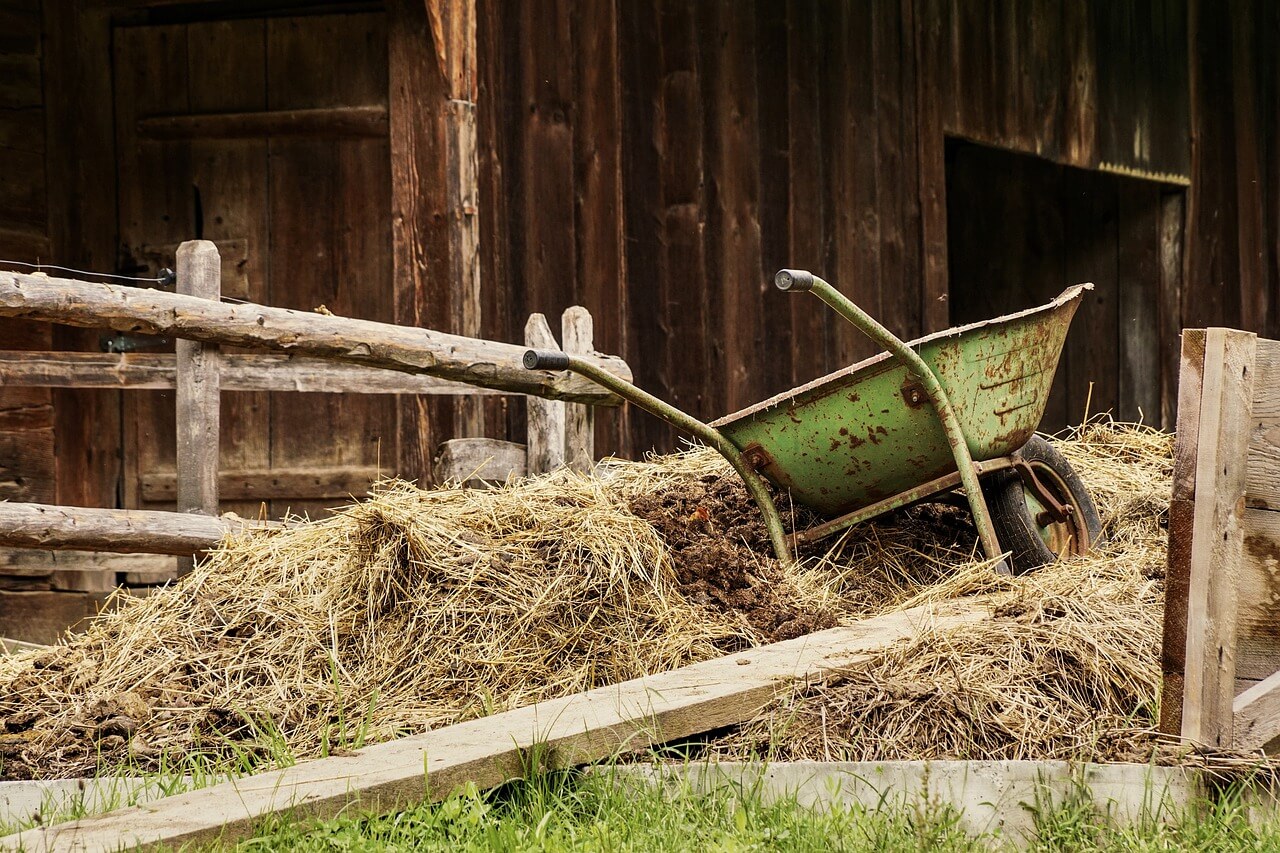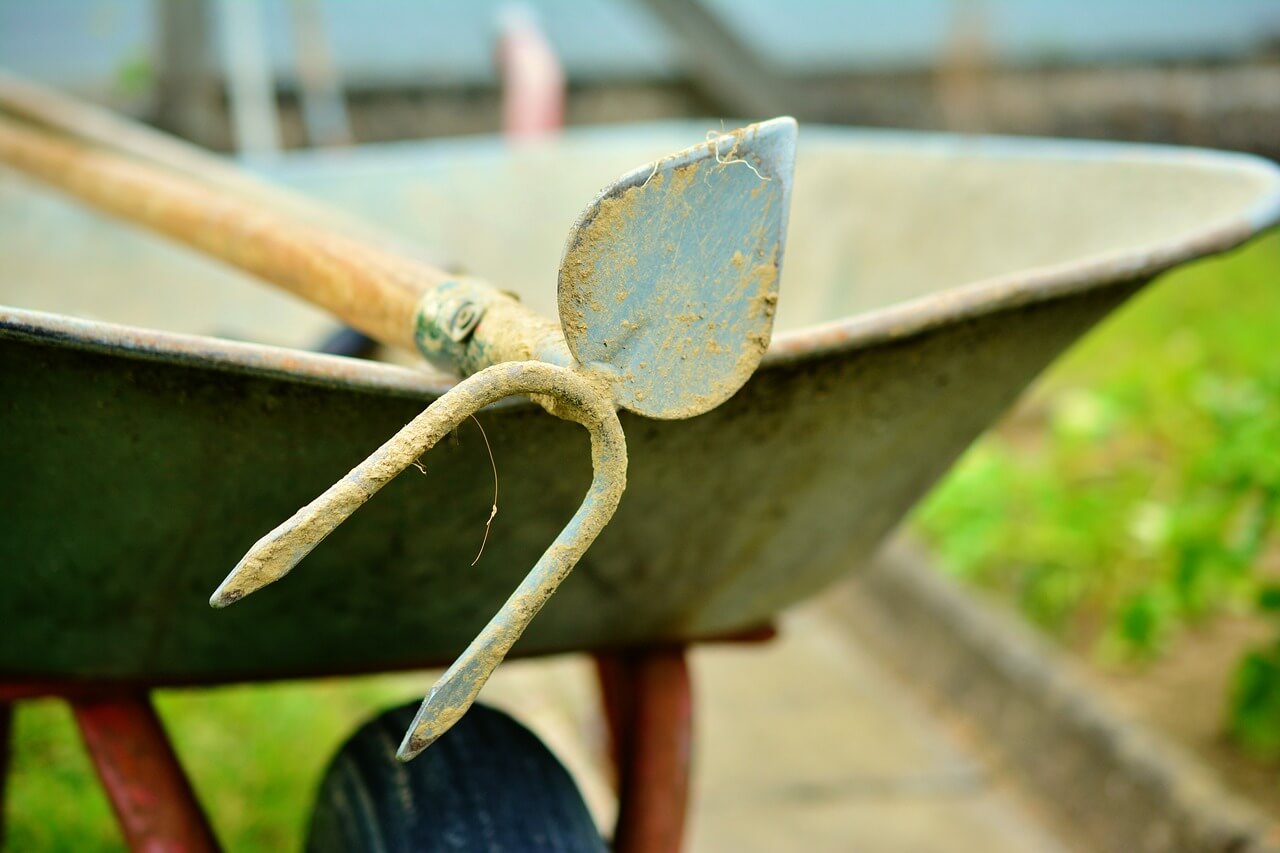The wheelbarrow has been in existence for several thousands of years. Designed as a simple hand cart, they are used to simplify the moving of items without the need of mechanical means all around the world, and remain popular today. In this article, we will learn more about the humble wheelbarrow and its ancient roots.
What You'll Learn Today
What is a Wheelbarrow?

A wheelbarrow is a small hand-propelled pushcart that comprises of a frame with a large, usually square-shaped, bucket attached to the top.
They can have one or two wheels at the front and a pair of legs at the back. There are two long handles projecting from the rear of the wheelbarrow used to pick it up and push it along.
All types of different variations of wheelbarrows have been around for centuries, with the widest variety coming from China.
What is the History of the Wheelbarrow?
The history of the wheelbarrow is a long one. The Chinese have been using wheelbarrows for many thousands of years, well before the birth of Christ.
They even herald a mythical inventor, called ‘Ko Yu’ as having come up with the idea, but that is undoubtedly more legend than fact.
The first evidence of a wheelbarrow in Europe comes from another, equally unusual place. There is one depicted on a panel in one of the many stained glass windows at the Notre Dame Cathedral in Chartres, France. These windows date back some 800+ years.
Ancient armies in China used wheelbarrows for moving goods around and many different styles are variations still exist in China today. They even invented ones with sails!
What is a Wheelbarrow Used For?
Wheelbarrows can be used to carry items easily from one place to another. Typically they are used by gardening to collect leaves, grass clippings, branches, weeds and so on, or in the building trade to carry sand, gravel, stones, concrete, or building materials.
My own wheelbarrows are used for all kinds of jobs around our homestead, from carrying water containers and animal feed to moving young chicks. There is an endless number of jobs that can be made easier using a simple wheelbarrow.
How to Store a Wheelbarrow?

Wheelbarrows are made from various materials. Traditionally they were crafted out of wood and I have a couple of antique French ones that are over a hundred years old. They even have their original wooden wheels with metal rims, just like the wagons of yesteryear.
Today wheelbarrows are normally made of metal such as steel tubing for the frame and galvanized steel, aluminum, or plastic for the bucket.
The metal parts of wheelbarrows are prone to rust if left outside to get wet. This is a particular problem with the bucket if it is allowed to fill with rainwater.
For this reason, it’s better to store your wheelbarrow on its end, resting on the part of the frame that goes around the wheel with the handles placed up against a wall. This prevents water from sitting in the bucket.
If you want to prolong the life of your wheelbarrow, you may want to find a sheltered place to keep it such as a shed or barn. They do take up quite a bit of space, so making somewhere to hang them up on the wall is a good idea.
How to Hang a Wheelbarrow on the Wall?
There are various different ways to hang a wheelbarrow on a wall. You can create a simple frame to slot your wheelbarrow into out of wood.
Use metal brackets fixed to the wall to hook your wheelbarrow onto, or get a simple metal animal tethering ring and fix that to the wall and attach the wheelbarrow using a chain or bungee cord.
If you do use a bungee cord, be careful when doing it up and removing it, as they can flick at you with great speed, potentially causing injury.
How to Change a Wheelbarrow Tire?
One of the things that wheelbarrows are prone to, is getting flat tires. If like me you have a lot of briar and thorn bushes on your land then sadly punctures are inevitable.
There are two ways around this, however. Both my single-wheeled and double-wheeled barrows are fitted with puncture-proof tires.
These kinds of tires look just like regular ones that you’d blow up, but instead of air or an air-filled inner tube, they contain foam. This means they never have to be re-inflated, as even if you run over a nail the tire won’t go down.
Some smaller wheelbarrows also have a solid rubber tire that also won’t need inflation.
If your barrow’s tire needs replacement or if you suspect your inner tube has a hole, you can usually remove the entire wheel easily by undoing the bolts holding it on with a wrench. If they are rusty use some WD-40 or a drop of lubricating oil or grease.
Changing the tire or inner tube yourself can be a bit tricky, and I always struggle to get the tire off the rim, or not damage the new inner tube when putting the tire back onto the rim.
The easiest thing to do is get a replacement tire or inner tube and ask your local tire place to put it on for you.
If you want to have a go yourself, take a look at this step-by-step video. In it, only the inner tube is replaced, but you can see that removing and replacing the tire itself is just a case of getting it off the rim.
Where to Buy a Wheelbarrow?
You can buy wheelbarrows, from lots of places, such as your local home depot, garden, building, or farm stores. They are also available online from various retailers including Amazon and eBay.
My tips for buying a wheelbarrow are – get one with a large, deep bucket and a puncture-proof tire whenever possible.
Conclusion
A wheelbarrow is an absolute must-have tool for any gardener, builder, or farmer. The number of ways wheelbarrows can be useful is incredibly diverse and they can really save you a lot of struggle and potential injury. They take away some of the strain on what would otherwise be backbreaking jobs.
Our wheelbarrows are used not only for practical everyday purposes but our two antique wooden ones have been lined with heavy-duty plastic sheeting, painted with a highly durable exterior wood paint, and are filled with a selection of herbs. They sit in pride of place, just outside my kitchen door.
You can even use regular old metal wheelbarrows as decorative planters once their useful moving days are over.
If you’ve enjoyed reading about the wheelbarrow, you may also like some of our other articles about other tools on our website. Here is our guide to secateurs and pruners.